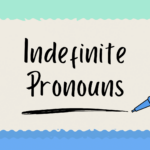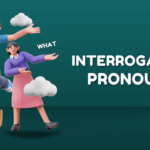Grammar might not be everyone’s cup of tea, but understanding some key concepts can certainly make our sentences smoother. One such concept is the relative pronoun that is a type of pronoun. This blog aims to break down the definition, usage, and examples of relative pronouns in a more down-to-earth manner.
What are Relative Pronouns?
Relative pronouns are words that join two clauses by giving more info about a noun in the main clause. The usual suspects are who, whom, whose, which, and that.
When to Use Relative Pronouns?
Who: Use it when talking about people.
- Example: The guy who fixed my computer is a tech genius.
Whom: Also for people, but a tad fancier.
- Example: I finally met the colleague whom you were praising.
Whose: This one shows possession, for people and things.
- Example: The restaurant, whose chef is renowned, is opening soon.
Which: For animals or things.
- Example: I found the keys which were missing.
That: For both people and things, especially in sentences where the info is crucial.
- Example: The movie that we watched last night was amazing.
Examples:
Here are some examples:
| Sentence | What’s Happening |
|---|---|
| The girl who won the contest is my friend. | We’re specifying which girl we’re talking about. |
| Our vacation, which lasted two weeks, was relaxing. | Giving more details about the vacation. |
| The dog whose tail is wagging is very friendly. | Showing possession and describing the dog. |
| The bike that I bought is parked outside. | Connecting the two clauses and adding details about the bike. |
Relative Pronouns in Complex Sentences:
Here is a complex sentence that shows relative pronoun:
- The teacher who helped us with the project gave some great advice, which made our work easier.
In this sentence, “who” introduces info about the teacher, while “which” connects to the second part, explaining the impact of the advice.
Frequently Asked Questions (FAQs) About Relative Pronouns:
Q1: What are relative pronouns and when should you use them?
Relative pronouns, including who, whom, whose, which, and that, serve to connect and provide additional information about a noun in the main clause. Use “who” for people, “whom” for a more formal tone, “whose” for possession, “which” for animals or things, and “that” for essential information.
Q2: Can you explain when to use “who” and “whom”?
Yes! “Who” is used when referring to people, and “whom” is also for people but tends to be more formal. For example, “The friend who called” and “The friend whom I called.”
Q3: How about “whose”? When do we use it?
“Whose” indicates possession and can be used for both people and things. For example, “The company whose product impressed me.”
Q5: Is there a difference between “which” and “that”?
Both are used for things, but “that” is often used in restrictive clauses, essential to the sentence’s meaning, while “which” is used in non-restrictive clauses, adding extra information. For example, “The book that I read” versus “The book, which was on the shelf.”
Conclusion:
So, next time you’re reading a sentence and spot extra info about someone or something, check out the relative pronoun – it’s like the secret ingredient making the sentence flow. Understanding these little guys can really level up your writing game without making things too complicated.


